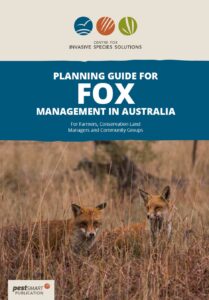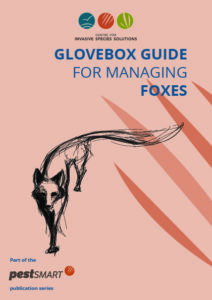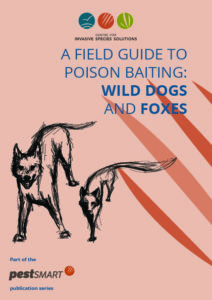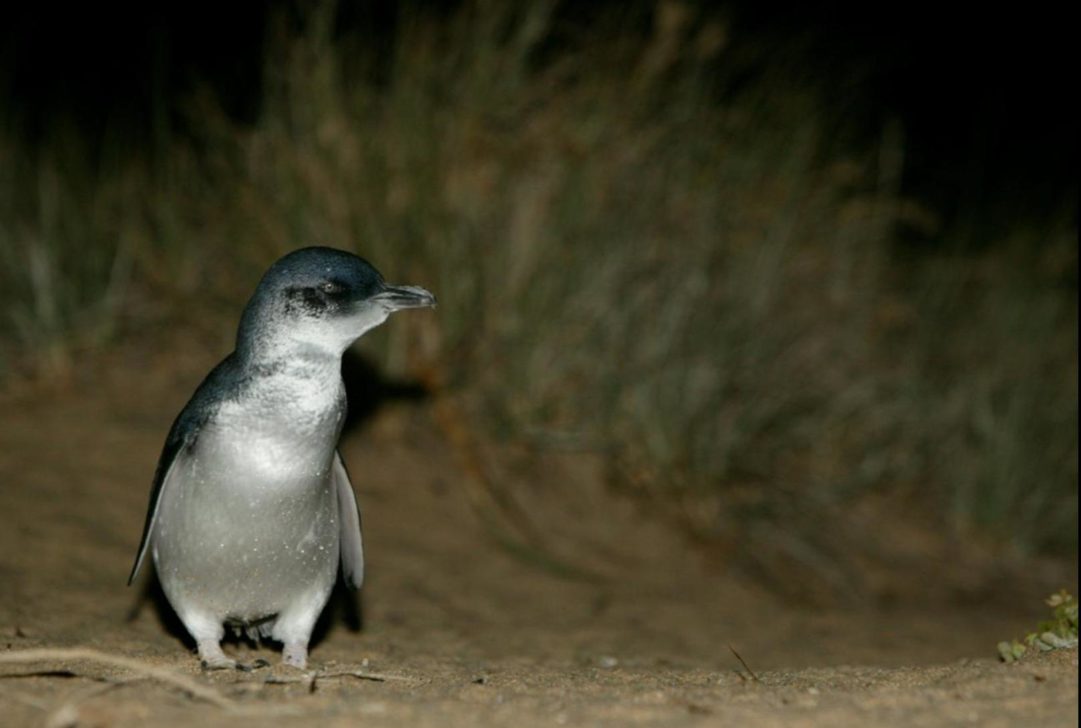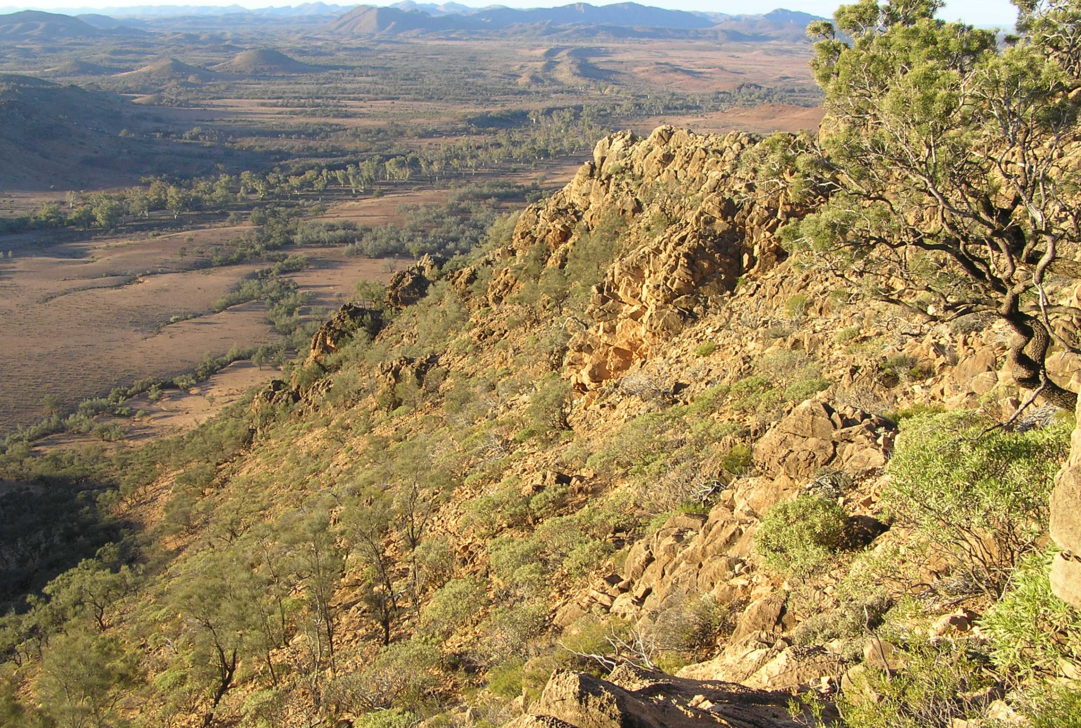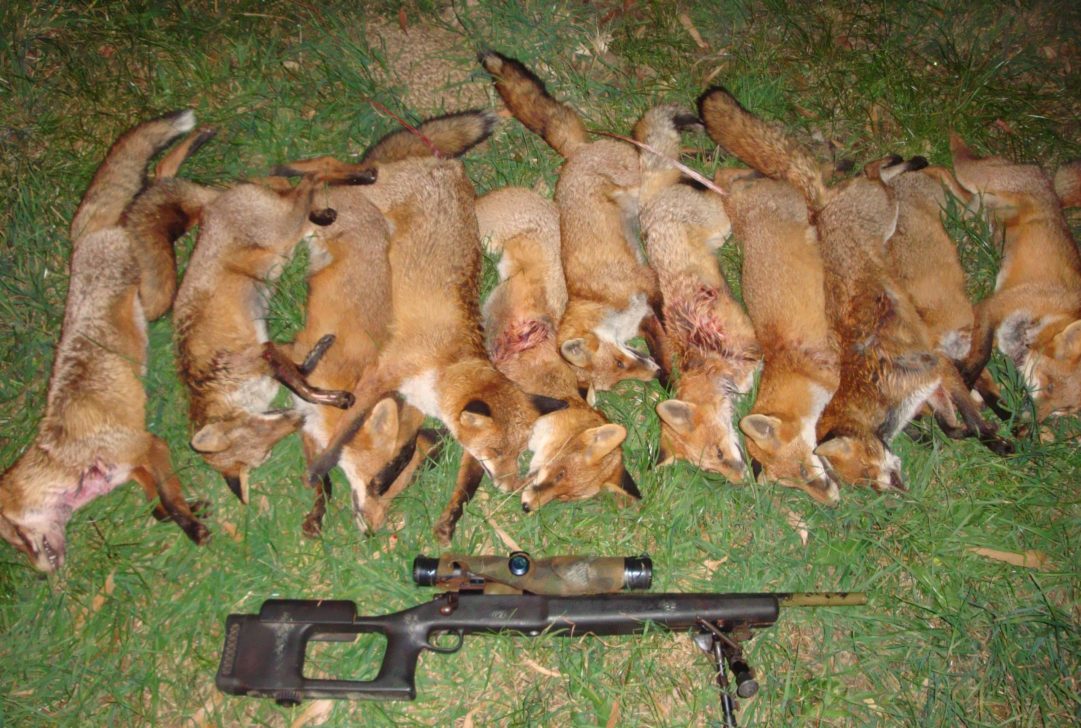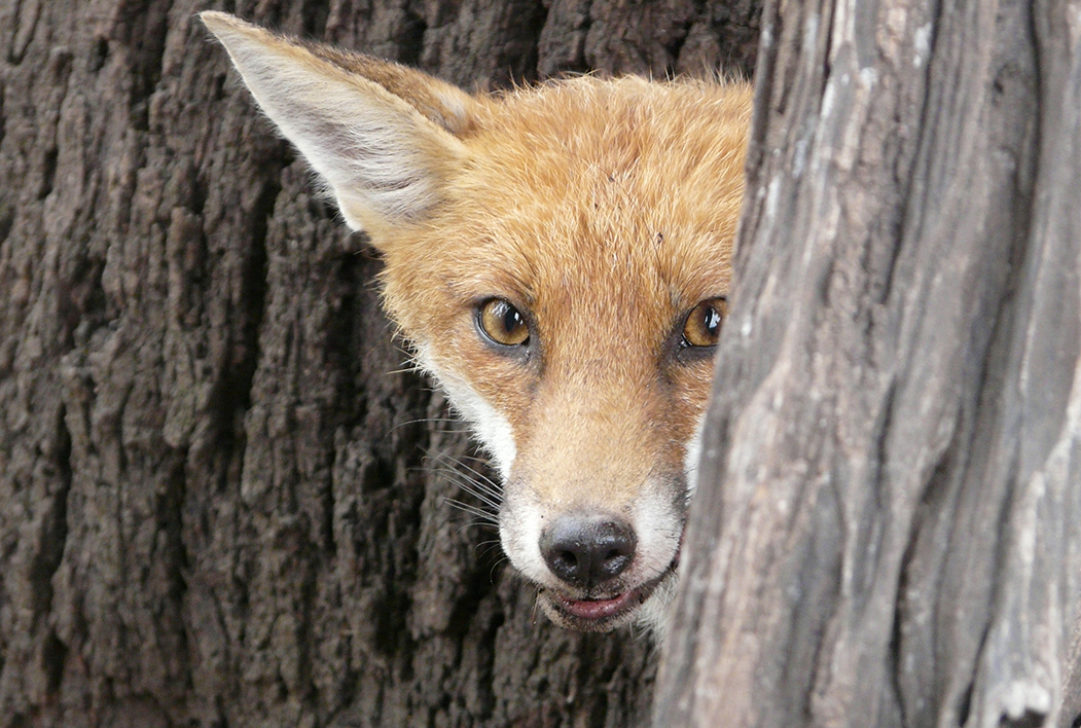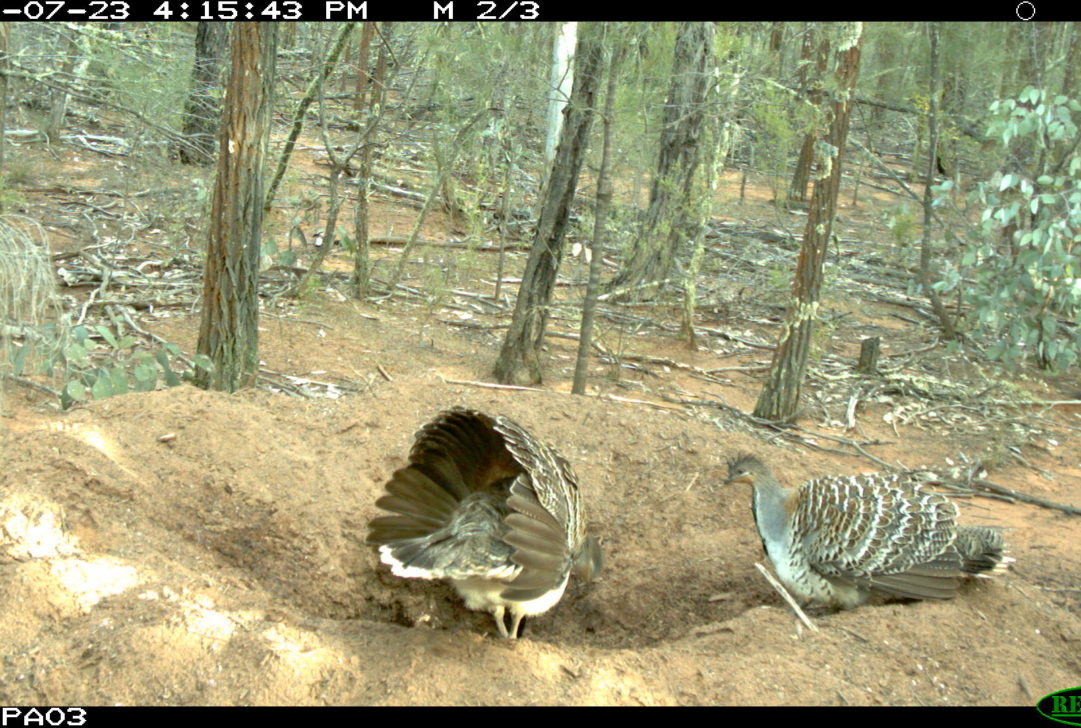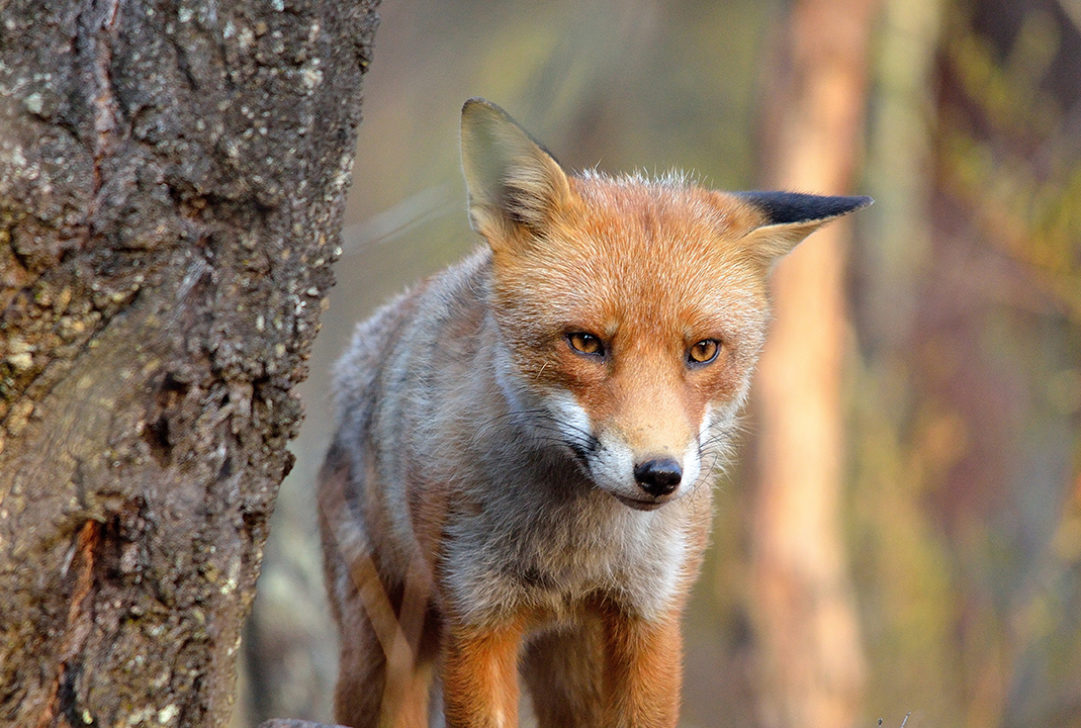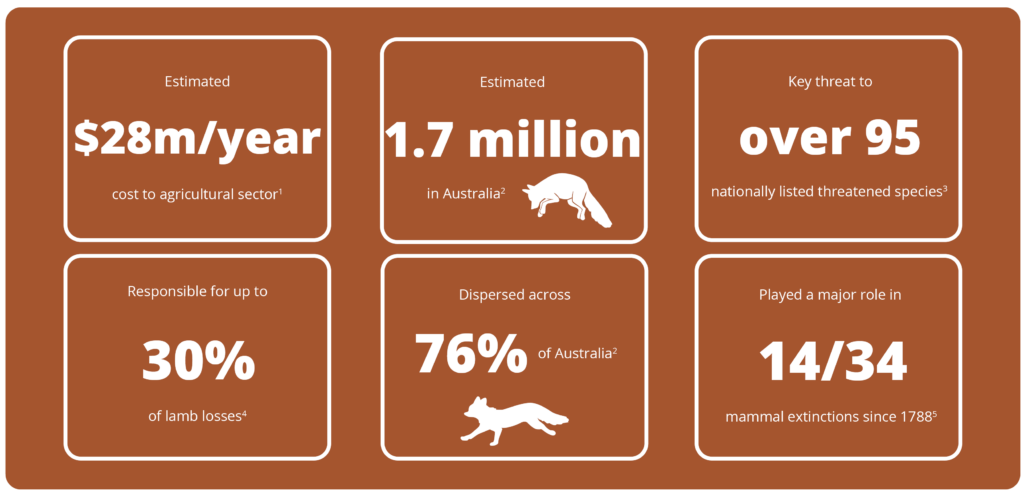
Foxes (Vulpes vulpes) are medium-sized predators and a highly successful invasive pest species in Australia. Since their introduction to Australia by Europeans for sport hunting in the 1850s, foxes have spread rapidly across the country and now occupy almost 80% of Australia’s landmass, with the exception of some islands, fenced refuges, and the far tropical north. Within 30 years of their release, foxes were declared as pests in Australia due to their rapid proliferation.

Image by Dion Thomson
Foxes occur in most environments in Australia because they are generalists with few specific habitat or dietary requirements and are both hunters and scavengers. Their densities vary with habitat, climate, and food availability. Some of the densest populations are found in human-dominated habitats such as urban areas and agricultural landscapes. Cities and towns offer plentiful food while control options are limited: for example, Melbourne’s fox population is 2-5 times higher than found in rural Victoria.

Image by Mary-Anne Addington
European foxes impact natural environments and native species through the predation of small to medium sized mammals, reptiles, birds, frogs and insects as well as the eggs of a range of species; competition for food and shelter; the spread of weeds through the transport of seeds; and the transmission of parasites and diseases. Foxes, along with cats, have played a key role in the extinction of at least 14 mammals and one bird species since their arrival in Australia, including the crescent nailtail wallaby, the lesser bilby and the paradise parrot, among others. Foxes are currently a significant threat to at least 95 nationally threated species along with populations of other native animals.
European foxes impact agricultural production through predation, transmission of disease, spread of weeds, and damage to infrastructure. The largest impact to agricultural production comes from the killing of livestock, particularly lambs, kid goats, and poultry. Foxes are known to kill more than they need when hunting by caching their kills, resulting in a larger number of animals being killed than the fox population might suggest. Foxes also act as vectors to a range of diseases and parasites such as parvovirus, canine distemper, leptospirosis, sarcoptic mange and hydatid tapeworm. Foxes also eat fruit, help spread weeds, and damage infrastructure through behaviours such as chewing irrigation pipes.
European foxes impact human health and society through killing and injuring livestock, pets, and culturally important native animals. Foxes are hosts and vectors of parasites and diseases that can be transmitted to both humans and domestic pets. Foxes are of further concern as they could also act as a carrier of rabies if the disease were accidentally introduced to Australia. The spread of disease and the injury to animals has both physical and mental health impacts on humans, particularly farmers. Foxes also create a general nuisance by spreading weeds, damaging infrastructure, raiding rubbish bins, eating pet and other food as well as stealing shoes and other belongings.
To learn more, you can:
- read about the biology, ecology and behaviour of European foxes in ‘Further Learning’
- find worksheets and publications about European foxes in our Resources section
- view a sample of our videos below and find a comprehensive selection of conference, forum, presentation and how-to videos on our YouTube channel.
11 videos found

02:36
Ground baiting for wild dog and fox control
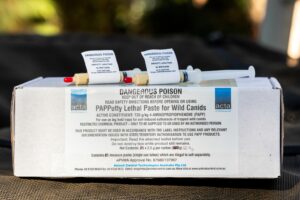
05:27
PAPPutty: Self euthanasia of wild dogs and foxes in leg-hold traps using a PAPP paste

09:42

15:54

09:53
Canid Pest Ejector (CPE) for fox and wild dog control

34:12
Management plan development for the control of foxes

12:33
Coastal fox control program

14:12
Introducing FoxScan: A resource for landholders, community groups and biosecurity groups

08:06

06:06
Using muzzles for working dog safety
FoxScan is a free resource for landholders, Landcare groups, community groups, local Councils, professional pest controllers and biosecurity groups to map and monitor European fox activity including predation, sightings and control activities.

FeralScan is committed to protecting users’ data, location and information, with all FoxScan information managed securely and discreetly as described in our privacy policy.
You can access FoxScan via www.foxscan.org.au or download the ‘FeralScan’ App and follow the European fox prompts.
How to record:
- Register your name, or simply record data using your email address.
- Record where you have seen European foxes, predation evidence and control actions.
- Submit your record and view it on the website.
- View other sightings in your local area.
Want a quick and easy digest of management information for foxes? Click on the thumbnail images below to download and print our planning, glovebox or field baiting guides free of charge. Use our order form for larger quantities, which can also feature your organisation’s logo. Please note that printing and postage charges will apply to most orders.

Visit the National Feral Cat and Fox Management Coordination website for the latest research, resources, newsletters and more.

























